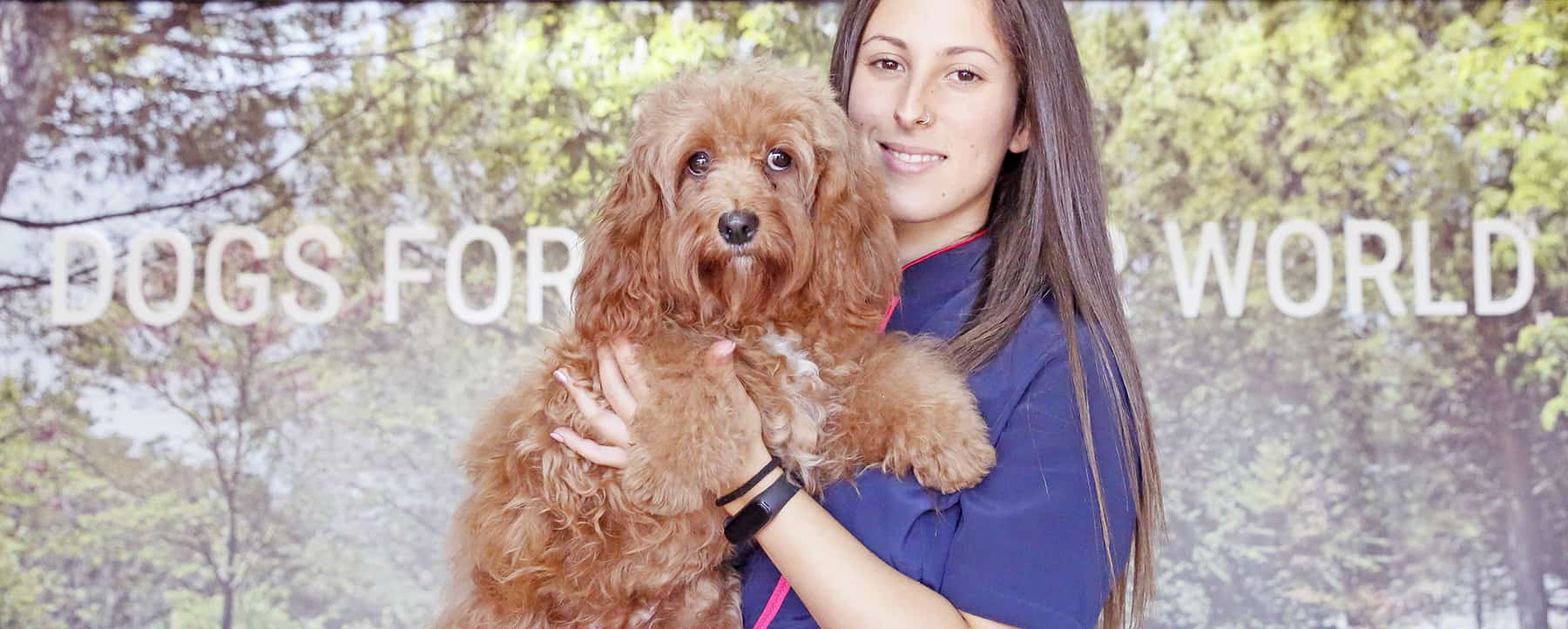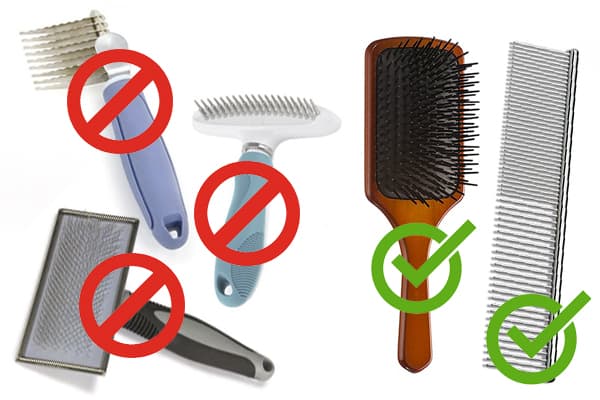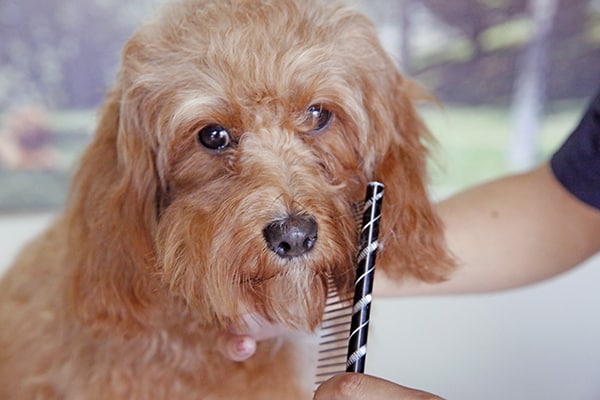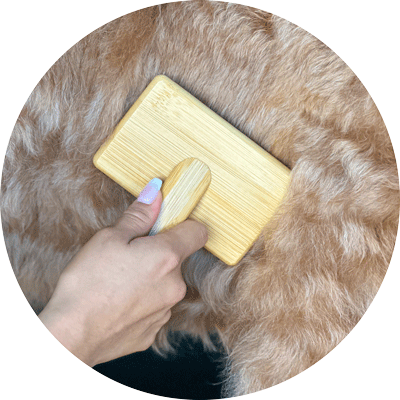
The hair of the Australian Cobberdog
The Australian Cobberdog breed has long, high-volume hair that can be can be wavy or straight in the shape of a. Although this hair can be trimmed, short hair is discouraged in the Australian Cobberdog because the hair protects them from sunburn in summer and from cold in winter. Long hair, in addition to protecting them, gives it a majestic appearance and is a pleasure for our touch if it is well cared for.
As in any breed, long hair runs the risk of creating knots. Knots are uncomfortable for our dogs since they are a focus of dirt, it causes tightness in the skin and if they are not treated they can cause skin problems such as dermatitis, dandruff, suppurations, etc. So we must learn to detect and eliminate the knots of our dog.
The video that explains how to avoid and remove hair knots from the Australian Cobberdog

Tools needed to avoid and remove knots
In the market we can find some tools such as knot cutters, rakes, or metal cards that ensure the elimination of knots. At DOGKING we advise against them as they are tools that can damage and even break the hair of the Australian Cobberdog. To prevent knots in the Australian Cobberdog we recommend only 2 tools:
- A short, soft, wide-toothed brush to open the hair without scratching the dog's skin
- A metallic comb to detect, after brushing, that we have not left any knots and, if any, we can eliminate it.

How to spot and remove knots in the Australian Cobberdog
Knots are detected during brushing, a task we do in maintaining the adult Australian Cobberdog. First we will brush with the wide-tooth brush and, once all the areas of the dog have been brushed, we will pass the metal comb with which we can check that there is no knot. If while we pass the brush or comb we see a knot, we will proceed to open it with our hands, without pulling it, so as not to damage the skin or hair of our dog. If the knot resists, we will introduce the tip of the comb at the root of the knot and pull outwards. Once the knot is undone, we will go over the metal comb again to ensure that the area is clean of knots.
The areas of greatest risk for the appearance of knots
There are areas of our dog that are more prone to the appearance of knots. We must look closely at the belly, armpits and face of the Australian Cobberdog because they are the most sensitive areas to knots
